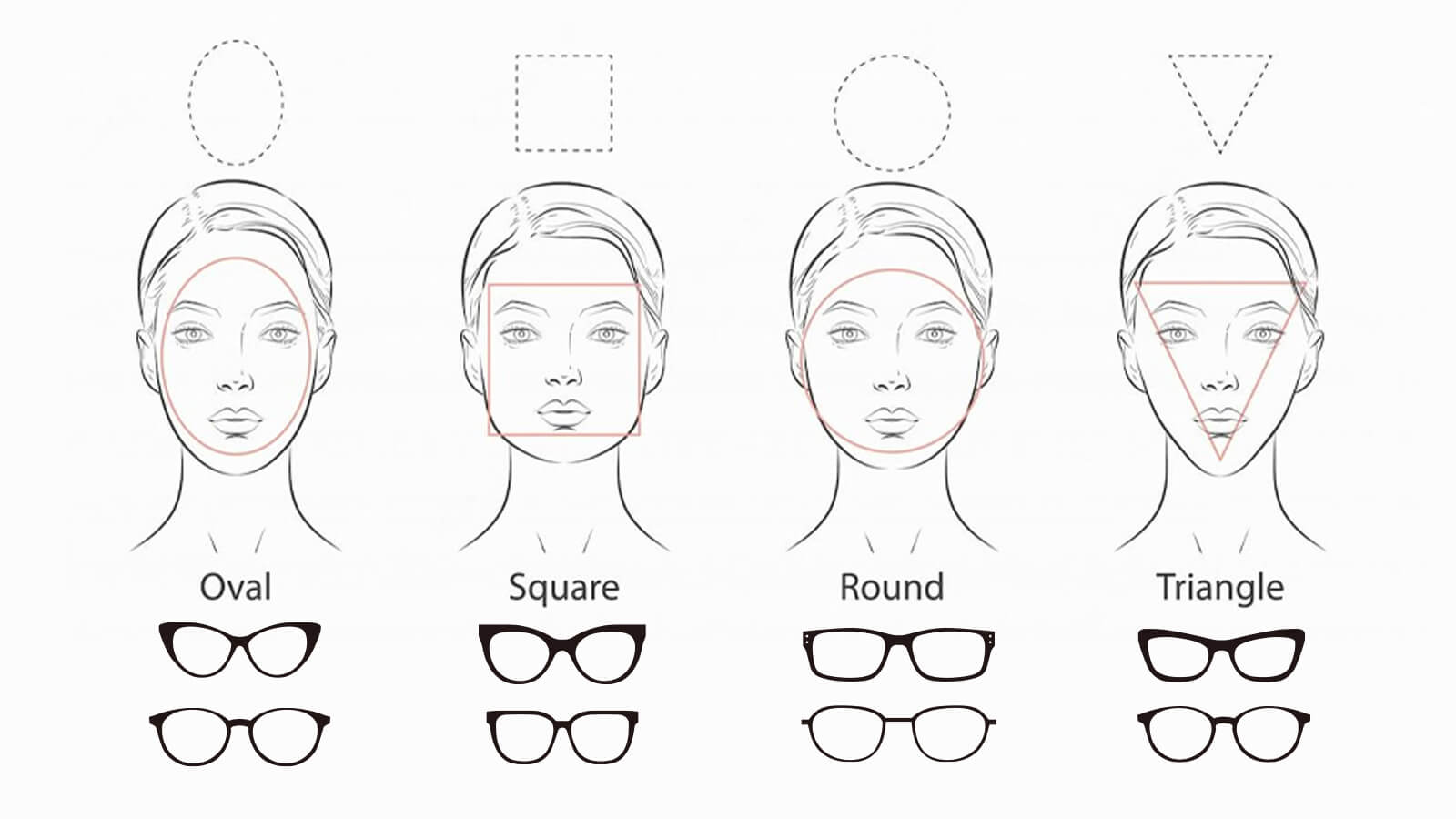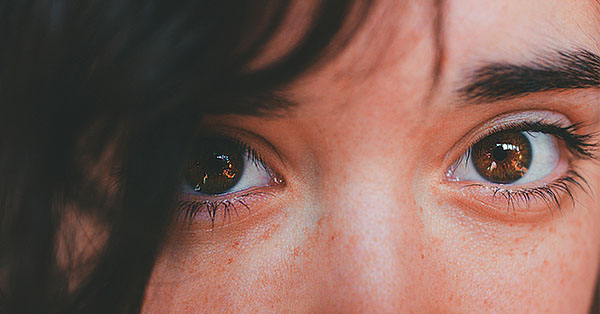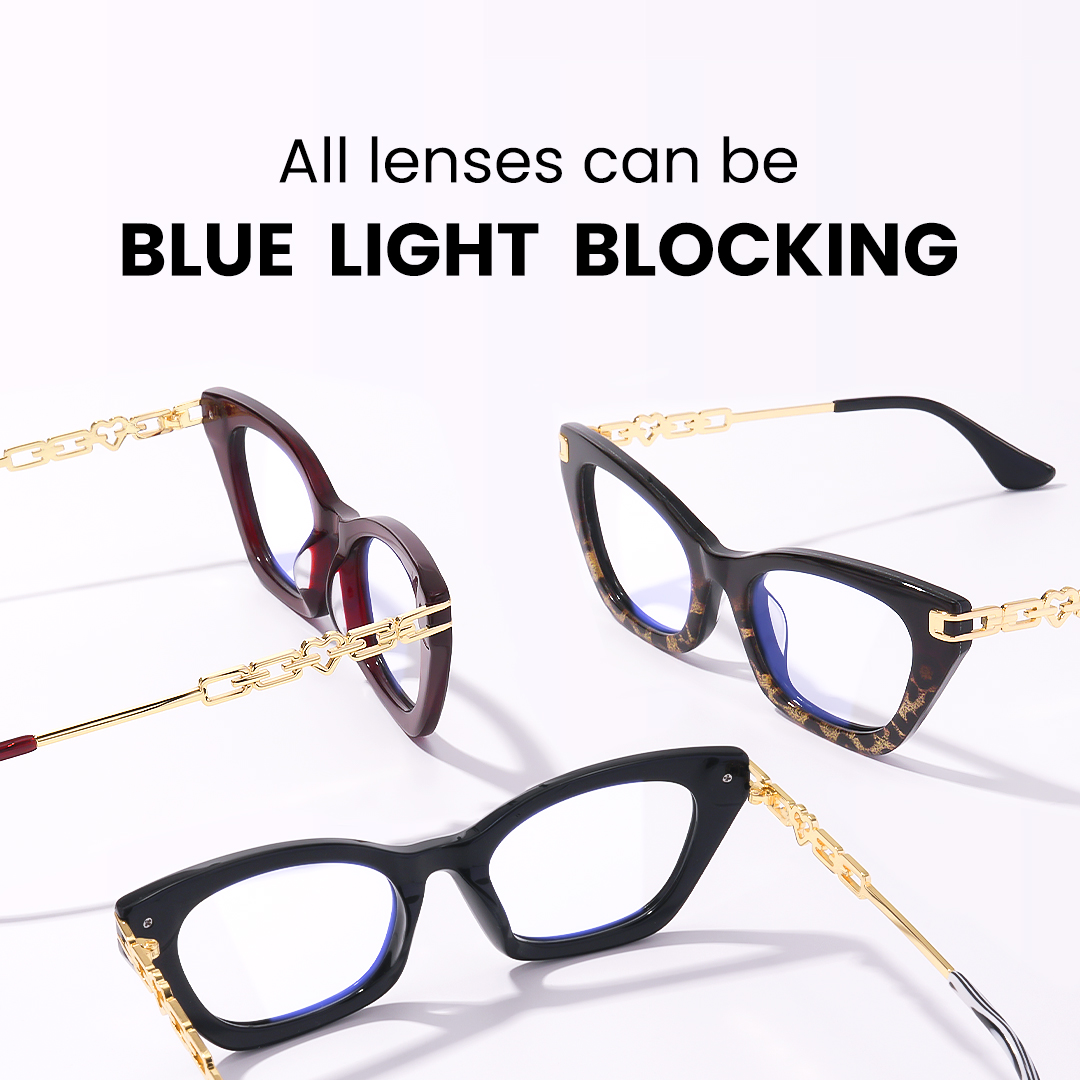
Guide to Picking Glasses That Suit Your Face Shape Perfectly
February 27,2023

What is Boho Style? A Comprehensive Guide to Boho-Chic Fashion
February 13,2025

Virtual Glasses Try On - Find Your Perfect Pair Online
April 02,2024

UV Protection Glasses VS. Blue Light Glasses - Vooglam
July 20,2023

Newest Style Modern Trendy Mens Glasses | Vooglam
March 01,2024

Stylish Reading Glasses: Blending Fashion with Functionality
February 16,2023

What are photochromic lenses & glasses?
September 22,2023

Brown Eyes: The Beauty of the Most Common Hue
September 01,2024

The chubby face glasses for round face female
August 02,2023

What are prisms in eyeglasses?
March 20,2023

What Are Bifocal Glasses? The Complete Guide (Types, History & Benefits)
April 14,2023

How to Read Your Eyeglass Prescription?
March 11,2023
Which Photoreceptor Is Responsible for Color Vision?
Home > Vooglam Blog > Which Photoreceptor Is Responsible for Color Vision? The Science Behind How We See Color
Have you ever wondered why a sunset appears so stunningly orange, or how your eyes can tell the difference between a red and a green apple? Your eyes' tiny, specialized cells, which function as nature's own color detectors, are responsible for this magic. Which photoreceptor, then, is in charge of color vision? Cone cells, one of the two kinds of photoreceptors in your retina, are largely responsible. However, this vibrant tale is much more than that. The functioning of cones, their differences from their night-vision cousins (rods), and how these microscopic wonders enable our vivid visual world are all explained in detail in this article.

What Are Photoreceptors?
Let's first examine the fundamentals of these amazing cells that convert light into sight before delving into the specifics of color vision.
Definition: Nature's Light Detectors
Your retina contains specialized cells called photoreceptors, which react to light by transforming photons into electrical signals that your brain can comprehend. Consider them the intermediaries between the perceptual world of vision and the physical world of light.
Two Main Types, Two Different Jobs
Two different kinds of photoreceptors, each with a unique superpower, are located in your retina:
Rods – The Night Shift Workers
- Responsible for vision in low light conditions
- Extremely sensitive to light but can't detect color
- Give you night vision and peripheral awareness
Cones – The Color Specialists
- Responsible for color vision and fine detail
- Work best in bright light
- Provide sharp, colorful daytime vision
Together, these photoreceptors create the full spectrum of human visual experience, from moonlit walks to sunny beach days.
Which Photoreceptor Controls Color Vision?
The answer:The photoreceptors in charge of color vision are called cones.
Here's why cones are your color vision champions:
Cones Work in Bright Light
Cones require enough light to work, in contrast to rods, which do well in the dark. Your cones literally require light to function, which explains why colors seem vivid during the day but turn gray as night falls.
They Detect Different Wavelengths
Photopigments found in each cone react to particular light wavelengths. These pigments react to light by sending out signals that your brain perceives as various hues. It's similar to having three distinct kinds of color sensors collaborating to create your visual environment.
The Brain's Color Calculator
The millions of colors you see are the result of your brain comparing and combining these signals. You never notice the intricate processing that goes into each vibrant moment because this computational magic happens so quickly and smoothly.
The 3 Types of Cone Cells
Not all cones are created equal. You have three distinct types, each tuned to different parts of the light spectrum:
S-Cones: The Blue Detectors
- Light Sensitivity: Short wavelengths (around 420-440 nm)
- Color Detected: Blue and violet hues
- Fun Fact: These are the least common, making up only about 5-10% of your cones
M-Cones: The Green Specialists
- Light Sensitivity: Medium wavelengths (around 530-540 nm)
- Color Detected: Green and yellow-green shades
- Distribution: More numerous than S-cones, especially in the fovea
L-Cones: The Red Responders
- Light Sensitivity: Long wavelengths (around 560-580 nm)
- Color Detected: Red and orange tones
- Abundance: Along with M-cones, these dominate your cone population
The Magic of Combination
These cones of color vision are not independent. All three cone types work together to produce the colors you see. Similar to mixing paint, your brain creates your entire visual palette by combining neural signals rather than pigments.
How Cone Cells Work Together
Understanding how do cones detect color requires looking at their teamwork:
The Blending Process
All colors are perceived by blending signals from your three cone types. Here's how it works:
- Pure colors stimulate primarily one cone type
- Mixed colors activate multiple cone types simultaneously
- White light stimulates all three equally
Real-World Example: Seeing Yellow
When you see a banana:
- The yellow wavelengths stimulate both L-cones (red) and M-cones (green)
- Your brain receives signals from both cone types
- It interprets this combination as "yellow"
- You perceive the banana's cheerful color
When Things Go Wrong: Color Blindness
Color blindness occurs when one or more cone types don't function properly:
- Protanopia: L-cones (red) don't work correctly
- Deuteranopia: M-cones (green) are affected
- Tritanopia: S-cones (blue) malfunction (very rare)
This demonstrates just how crucial each cone type is for complete color vision.
What About Rod Cells?
While cones steal the color vision spotlight, rods deserve recognition for their own vital role:
The Numbers Game
- Rods outnumber cones about 20:1 (120 million rods vs. 6 million cones)
- They're incredibly sensitive — able to detect single photons
- Perfect for night and peripheral vision
Why No Color at Night?
Rods excel in low light but can't distinguish colors because:
- They all contain the same photopigment (rhodopsin)
- They're optimized for sensitivity, not color discrimination
- This is why moonlit scenes appear monochromatic
The Trade-Off
Evolution gave us two systems: rods for sensitivity in darkness, cones for color and detail in light. You can't have both maximum sensitivity and color detection in one cell — nature chose specialization over compromise.
Where Are Photoreceptors Located?
The arrangement of photoreceptors in your retina is precisely organized for optimal vision:
The Retinal Real Estate
- Fovea: Cone central — packed with cones for sharp, colorful central vision
- Peripheral retina: Rod territory — dominated by rods for motion detection and night vision
- Blind spot: Where the optic nerve connects — no photoreceptors at all
Strategic Positioning
This arrangement makes perfect sense:
- You need color and detail for whatever you're looking at directly (cone job)
- You need sensitivity and motion detection in your periphery (rod specialty)
- Together, they create a complete visual experience
FAQs
Why can't we see color in the dark?
Only your rod cells are active in the dark, and they only sense the intensity of the light, not color. The world appears grayscale at night because your color-detecting cone cells require bright light to work. Colors do not vanish; they are simply indistinguishable by your cones in the absence of sufficient illumination.
Can cone cells be repaired or replaced?
Currently, damaged cone cells cannot regenerate naturally. However, exciting research into gene therapy and stem cell treatments shows promise for future treatments. Some experimental therapies are already helping people with certain types of color blindness.
How do animals' photoreceptors compare to humans?
Animal vision differs greatly! Most mammals only have two types of cones (seeing ultraviolet), whereas many birds have four. With sixteen different kinds of photoreceptors, mantis shrimp triumph! Dogs have more rods than humans, which helps them see better at night even though they can see fewer colors.
What causes cone dysfunction?
Cone issues can be age-related (macular degeneration affects the cone-rich fovea), genetic (like color blindness), or brought on by damage from excessive light exposure, certain drugs, or poor diet. Cone function can be preserved by shielding your eyes from UV radiation.
A Colorful Conclusion
Which photoreceptor, then, is in charge of color vision? All the credit should go to your amazing cone cells. These microscopic experts put forth endless effort to convert light waves into the vibrant tapestry of hues that enhance your everyday existence. These photoreceptors are the unsung heroes of your visual experience, from the L-cones that make that stop sign pop to the S-cones that identify your favorite blue jeans.
Knowing how these cells function serves as a reminder to preserve these priceless color detectors in addition to being an intriguing scientific topic. They are, after all, indispensable and the source of the vibrant beauty of your world.
Are you prepared to provide your cones with the defense they need? Vooglam provides cutting-edge lens technologies that protect your photoreceptors from damaging UV rays and too much blue light, preserving your vibrant vision for many years to come.

Vooglam Blog
Vooglam blog shares professional knowledge about eyeglass frames, lenses, etc., and provides help when purchasing and using eyewear products. At the same time, Vooglam focuses on fashion glasses to interpret the trend of glasses for you.

From Mocha Mousse to Cloud Dancer: The "Soft Power" Palette of 2025-2026
The fashion world is currently taking a deep breath. After years of neon dopamine dressing and chaotic prints, the collective mood is shifting toward something quieter, yet infinitely more powerful. W
December 26,2025
The Science of Polarized Lenses: How They Improve Clarity and Safety in Snowy Conditions
If you've ever been out on a sunny day in the snow, chances are you know all about snow glare. That painful, sometimes blinding reflection off the bright white of snow isn't just annoying; it can be e
November 26,2025
Don't Spook Your Style: 6 Iconic Halloween Costumes with Glasses
Halloween isn't just about jumping into someone else's skin for a night—it's about finding pieces of yourself you didn't know existed. For those of us who wear glasses daily, the question isn't whethe
October 16,2025
How to Fix a Metal Glasses Arm Hinge: A Step-by-Step Repair Guide
Why Hinge Repairs Are Common—and FixableIf you wear glasses daily, chances are you've dealt with issues related to the hinges on your metal frames. It's one of the most common weak points, and over ti
July 07,2025






































